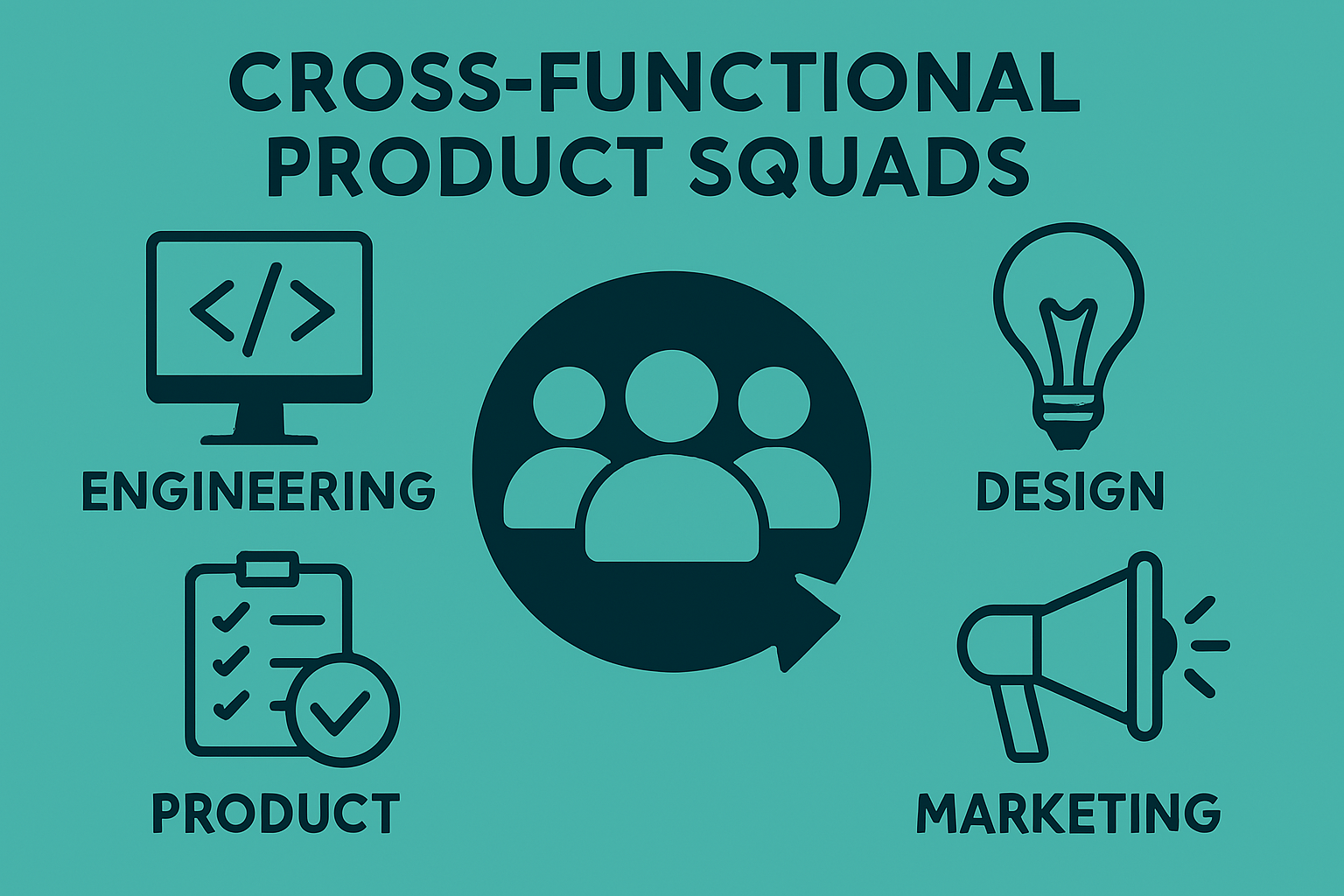Modern product development demands speed, alignment, and adaptability. Cross-functional product squads—small, autonomous teams with diverse skills—have become the blueprint for delivering value faster while keeping the user at the center.
What Are Cross-Functional Squads?
A cross-functional squad is a tightly knit team composed of all the roles needed to build and ship a product feature or experience. A typical squad may include:
Frontend and backend engineers
UX/UI designers
QA/test engineers
Product managers
Sometimes data analysts or marketers
Each squad owns a specific area of the product and has the autonomy to plan, build, test, and release features with minimal external dependencies.
Why Cross-Functionality Matters
Siloed teams slow down decision-making and introduce handoff delays. Cross-functional squads solve that by:
Reducing bottlenecks: No more waiting for another team to implement or approve something.
Accelerating iterations: Designers, developers, and PMs can ideate and test ideas collaboratively.
Improving accountability: With shared goals and ownership, teams rally around product outcomes, not just task completion.
Enhancing user-centricity: Squads focus on delivering end-to-end value to users—not just pieces of a system.
The result is faster delivery and tighter alignment with business goals.
How Squads Operate in Practice
Cross-functional squads follow Agile or Scrum frameworks but often tweak them for autonomy:
Squad missions are aligned with business outcomes (e.g., improve checkout conversion).
Rituals like daily standups, retros, and backlog grooming remain, but are squad-specific.
Ownership over specific domains (e.g., onboarding flow, payments, notifications) encourages deep focus.
Embedded roles (like UX or data) ensure insights and iterations happen in real-time.
Squads may sync with other squads via tribe leads or shared planning boards.
Challenges and How to Solve Them
While powerful, cross-functional squads face pitfalls:
Knowledge silos between squads: Solved via internal demos and rotating team
Alignment gaps: Regular cross-squad reviews and shared OKRs help everyone stay on the same page.
Resource constraints: Especially for UX or DevOps—consider creating floating roles or Centers of Excellence to support squads as needed.
The key is balancing autonomy with some strategic alignment across the org.
Conclusion
Cross-functional product squads create an environment where speed and innovation thrive. By bringing together all necessary skills and aligning them around outcomes instead of outputs, companies can move faster and build better. The magic happens not just because of the structure—but because of the shared purpose and ownership that each squad embodies.





